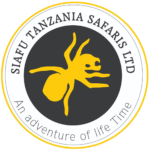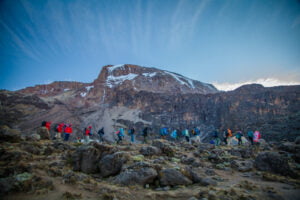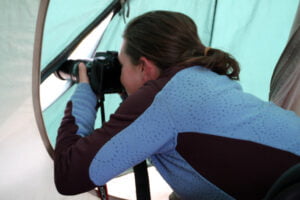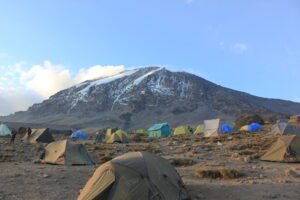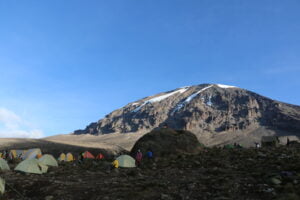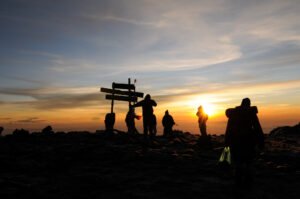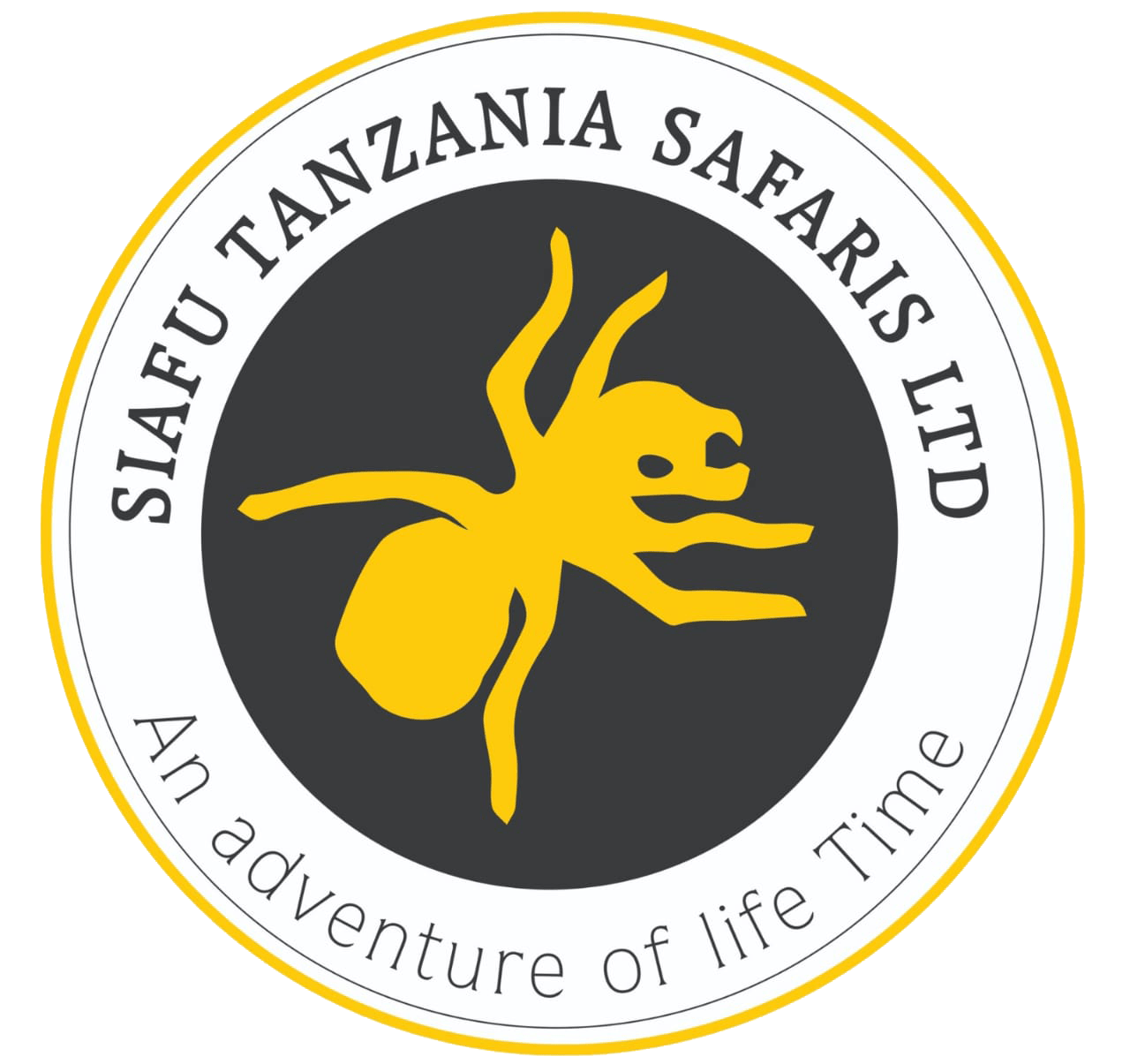mount kilimanjaro trekking | trekking mount kilimanjaro | kilimanjaro trekking mount | route 7 days
7-Day Shira Plateau Climb
Experience the Splendor of Aerial Views
Embark on a thrilling 7-day adventure with the Shira Plateau Climb, Kilimanjaro’s Western Ascent. This route is specifically designed for those who are already acclimatized or have previous high-altitude hiking experience. Beginning at a higher altitude, this expedition allows you to experience the splendor of aerial views and the unique landscapes of the Shira Plateau. From rugged terrain to magnificent vistas, this journey promises an extraordinary Kilimanjaro experience.
Day-by-Day Itinerary:
Day 1: Arrival in Moshi
Arrive in Moshi, where your adventure begins. Settle into your accommodation and meet your experienced guides who will accompany you throughout your climb. Take this opportunity to relax and prepare for the challenging days ahead.
Day 2: Machame Gate to Shira 2 Camp
Start your climb with a drive to Machame Gate and then trek through lush rainforests. As you gradually ascend, witness the changing landscape and diverse flora. Arrive at Shira 2 Camp, located on the scenic Shira Plateau, where you can absorb the breathtaking panoramic views of the surrounding peaks.
Day 3: Shira 2 Camp to Lava Tower and Barranco Camp
Embark on a challenging day as you trek towards Lava Tower, an imposing volcanic formation. The high-altitude exposure helps with acclimatization. Enjoy the dramatic scenery before descending to Barranco Camp, nestled in the picturesque Barranco Valley. Marvel at the stunning views of the Great Barranco Wall.
Day 4: Barranco Camp to Karanga Camp
Conquer the Great Barranco Wall, a thrilling ascent that rewards you with remarkable views. Descend into the Karanga Valley, where you’ll find Karanga Camp. This intermediate campsite offers a chance to relax and acclimatize, surrounded by breathtaking landscapes.
Day 5: Karanga Camp to Barafu Camp
Continue your ascent and traverse various terrains, passing through alpine deserts and rocky landscapes. Arrive at Barafu Camp, the base for the final summit attempt. Take in the awe-inspiring views of the night sky and Mount Kilimanjaro’s glaciers before resting for the night.
Day 6: Barafu Camp to Uhuru Peak and Mweka Camp
Embark on an exhilarating midnight summit bid to reach Uhuru Peak, the highest point in Africa. Witness the breathtaking sunrise from the summit and celebrate your incredible achievement. Descend to Mweka Camp, where you can rest and reflect on your journey.
Day 7: Mweka Camp to Mweka Gate and Departure
Complete the final leg of your descent through the lush rainforests of Kilimanjaro. Admire the vibrant vegetation and bid farewell to the majestic mountain as you reach Mweka Gate. From here, transfer back to Moshi, where you can reflect on your unforgettable adventure.
End of Safari
Why Consult With Us?
Inclusions:
- Airport transfers
- Accommodation as per itinerary
- Park fees and permits
- Professional mountain guides and porters
- Meals during the trek
Exclusions:
- Airfare.
- Personal trekking equipment.
- Tips and gratuities.
- Personal expenses.
- Travel insurance.
Exploring the Enchanting Shira Plateau: A Trekker’s Guide to Africa’s Hidden Gem
Welcome to the Shira Plateau, Africa’s hidden gem and a paradise for trekkers seeking adventure off the beaten path. Nestled in the heart of Tanzania, this enchanting destination boasts breathtaking landscapes, diverse wildlife, and a sense of tranquility like no other.
Imagine standing at the edge of the world, gazing across vast stretches of untouched wilderness. This is Shira Plateau, a place where nature showcases its raw beauty in the most spectacular way. From lush rainforests to rugged volcanic terrains, every step you take here is a journey filled with wonder and awe.
Experience the thrill of conquering Africa’s highest peak, Mount Kilimanjaro, as you traverse the Shira Route. Trek through ever-changing landscapes, passing through moss-covered moorlands, unique alpine deserts, and awe-inspiring glaciers. Encounter a rich array of wildlife, including elephants, buffaloes, and elusive leopards.
With its unmatched beauty and tranquility, the Shira Plateau offers trekkers a once-in-a-lifetime opportunity to connect with nature in its purest form. Whether you’re an experienced adventurer or a first-time trekker, this hidden gem will leave you spellbound, craving for more.
So, pack your bags and embark on an unforgettable journey through the captivating landscapes of the Shira Plateau. Get ready to be mesmerized by this extraordinary corner of Africa that promises to reveal its secrets to those who dare to explore.
Yes, it is possible for a beginner to climb Kilimanjaro, provided they have a reasonable level of fitness and proper preparation. Kilimanjaro is considered a non-technical climb, meaning that no specialized mountaineering skills or equipment are required. However, it is still a strenuous and challenging trek due to the high altitude and the distance covered. Proper acclimatization, physical training, and hiring experienced guides are recommended for beginners to increase their chances of success and safety.
The Shira Plateau is a high-altitude desert plateau on the western side of Mount Kilimanjaro. Its elevation is approximately 3,800 meters (12,500 feet) above sea level.
Most climbers do not require supplemental oxygen when climbing Kilimanjaro, as the summit elevation of 5,895 meters (19,341 feet) is considered within the range where healthy, well-acclimatized individuals can function without supplemental oxygen. However, some climbers may choose to use oxygen, particularly those who are more susceptible to altitude sickness or have pre-existing medical conditions. Oxygen is also recommended for climbers attempting to reach the summit in a shorter time frame, as it can help mitigate the effects of altitude.
The typical duration for climbing Kilimanjaro ranges from 5 to 9 days, depending on the route chosen and the pace of the climb. Most reputable operators recommend taking at least 6 or 7 days for the ascent to allow for proper acclimatization and increase the chances of a successful summit. Shorter routes (5-6 days) are more challenging and increase the risk of altitude sickness, while longer routes (7-9 days) provide more time for acclimatization and rest, increasing the likelihood of reaching the summit safely.
The Shira Plateau is located on the western side of Mount Kilimanjaro, one of the world’s most iconic mountains. Situated at an altitude of approximately 3,800 meters (12,500 feet), this high-altitude plateau offers trekkers a unique perspective of the surrounding landscapes.
The geographical features of the Shira Plateau are diverse and captivating. As you ascend, you’ll encounter lush rainforests teeming with life, giving way to moss-covered moorlands and unique alpine deserts. The volcanic terrain adds an otherworldly charm to the landscape, with ancient lava flows and towering volcanic cones dotting the plateau.
The climate on the Shira Plateau is influenced by its high elevation. Expect cool temperatures and frequent changes in weather conditions. It’s important to be prepared for rapid temperature drops, especially during the night. The plateau experiences a wet season from March to May and a dry season from June to October. However, it’s worth noting that weather patterns can be unpredictable, so it’s essential to be equipped for various conditions.
The Shira Plateau is home to a rich diversity of wildlife and flora, making it a haven for nature enthusiasts. As you trek through the plateau, keep an eye out for the majestic elephants and buffaloes that roam freely in the surrounding wilderness. The elusive leopard, although harder to spot, adds an aura of mystery to the experience.
The flora on the Shira Plateau is equally captivating. The lower slopes are covered in lush rainforests, where you’ll find a plethora of plant species. As you ascend, the vegetation transitions into moss-covered moorlands, characterized by unique plants that have adapted to the harsh alpine conditions. Keep an eye out for the giant lobelias and Senecio kilimanjari, which add a surreal element to the landscape.
Exploring the Shira Plateau offers a rare opportunity to witness the delicate balance of nature and the interconnectedness of its inhabitants. It’s a chance to immerse yourself in the raw beauty of the African wilderness and gain a deeper appreciation for the natural world.
The Shira Plateau offers several trekking routes and trails that cater to a range of experience levels and preferences. The most popular route is the Shira Route, which starts at a higher elevation compared to other routes, allowing for a more gradual acclimatization process.
The Shira Route begins at the Londorossi Gate and traverses the Shira Plateau before joining the Machame Route. This route offers trekkers a chance to experience the diverse landscapes of the plateau, including the moss-covered moorlands and unique alpine deserts. The longer acclimatization period on this route increases the chances of a successful summit attempt.
For those seeking a more challenging trek, the Lemosho Route is an excellent option. This route starts at a lower elevation than the Shira Route, providing a more gradual ascent. The Lemosho Route is known for its scenic beauty, with breathtaking views of the Shira Plateau and the surrounding landscapes.
Regardless of the route you choose, trekking on the Shira Plateau requires a moderate level of fitness and a willingness to embrace the elements. Be prepared for long days of hiking, steep ascents, and the possibility of altitude-related challenges. It’s essential to listen to your body, follow the guidance of experienced guides, and take the necessary precautions to ensure a safe and enjoyable trek.
Planning a trek to the Shira Plateau requires careful consideration and preparation. Here are some key factors to keep in mind:
- Season: The dry season from June to October is generally considered the best time to trek on the Shira Plateau. The weather is more stable, and the views are clearer. However, the plateau can be trekked year-round, with each season offering a unique experience.
- Permits: To trek on the Shira Plateau, you’ll need to obtain permits from the Kilimanjaro National Park. It’s advisable to book your permits well in advance, especially during the peak season, to secure your spot.
- Fitness and Training: Trekking on the Shira Plateau requires a moderate level of fitness. It’s recommended to engage in regular cardiovascular and strength training exercises to prepare your body for the physical demands of the trek. Additionally, acclimatization hikes at higher altitudes can help prepare your body for the challenges of high altitude.
- Gear and Equipment: Invest in high-quality trekking gear, including sturdy hiking boots, warm and waterproof clothing, a comfortable backpack, and a reliable sleeping bag. It’s essential to pack lightweight and moisture-wicking clothing to ensure comfort during the trek.
- Guides and Porters: Hiring experienced guides and porters is highly recommended for a safe and enjoyable trek. They will provide valuable guidance, carry your equipment, and assist with setting up camp. Supporting the local community by hiring local guides and porters is a responsible and sustainable choice.
By considering these factors and planning your trek in advance, you’ll be well-prepared to embark on an unforgettable adventure through the captivating landscapes of the Shira Plateau.
To ensure a safe and comfortable trek on the Shira Plateau, it’s essential to pack the right equipment and gear. Here’s a checklist of the essential items you’ll need:
- Hiking boots: Invest in a sturdy pair of hiking boots that provide ankle support and have a good grip on various terrains.
- Moisture-wicking clothing: Pack lightweight and breathable clothing that wicks away sweat and keeps you dry during the trek. Layering is key to adapt to changing weather conditions.
- Waterproof and windproof jacket: A high-quality waterproof and windproof jacket is essential to protect you from rain and wind on the plateau.
- Warm clothing: Temperatures can drop significantly on the Shira Plateau, especially during the night. Pack warm layers, including fleece jackets, thermal base layers, and insulated pants.
- Sleeping bag: Choose a sleeping bag that is suitable for the temperatures you’ll encounter on the plateau. Ensure it is lightweight, compact, and has a good insulation rating.
- Backpack: Invest in a comfortable and durable backpack that can carry all your essentials. Look for a backpack with adjustable straps and good weight distribution.
- Headlamp: A headlamp is essential for navigating in low-light conditions, especially during early morning summit attempts.
- Water bottles and water purification tablets: Stay hydrated by carrying enough water bottles and water purification tablets to treat water from natural sources.
- Sun protection: Pack sunscreen, sunglasses, and a hat to protect yourself from the strong African sun.
- First aid kit: Carry a basic first aid kit that includes bandages, pain relievers, blister treatment, and any personal medications.
By ensuring you have the right equipment and gear, you’ll be prepared to tackle the challenges of trekking on the Shira Plateau and make the most of your adventure.
Trekking on the Shira Plateau offers an exhilarating adventure, but it’s important to prioritize safety at all times. Here are some essential safety tips and precautions to keep in mind:
- Acclimatization: Take the time to acclimatize to the high altitude on the Shira Plateau. Ascend slowly, allowing your body to adjust to the changing conditions. Listen to your body and communicate any symptoms of altitude sickness to your guides.
- Stay hydrated: Drink plenty of water to stay hydrated throughout the trek. Dehydration can worsen the symptoms of altitude sickness. Use water purification tablets to treat water from natural sources.
- Follow the guidance of your guides: Your guides are experienced and knowledgeable about the terrain and weather conditions. Listen to their advice and follow their instructions at all times.
- Watch your step: The terrain on the Shira Plateau can be uneven and challenging. Pay attention to your footing and use trekking poles for stability when necessary.
5. Protect yourself from the sun: Apply sunscreen regularly, wear sunglasses, and use a hat to protect yourself from the strong African sun. The higher altitude can intensify the sun’s rays. - Pack a basic first aid kit: Carry a basic first aid kit that includes bandages, pain relievers, blister treatment, and any necessary personal medications. Be prepared for minor injuries and common ailments.
- Respect the environment: Leave no trace behind and respect the fragile ecosystem of the Shira Plateau. Dispose of waste properly and follow the principles of responsible trekking.
- Stay connected: Inform your loved ones about your trekking plans and itinerary. Carry a reliable communication device, such as a satellite phone or a two-way radio, to stay connected in case of emergencies.
By following these safety tips and precautions, you can ensure a safe and enjoyable trekking experience on the Shira Plateau.
When trekking on the Shira Plateau, you’ll have several accommodation options to choose from, ranging from camping to luxurious lodges. Here are some popular choices:
- Camping: Camping is a popular option for trekkers on the Shira Plateau. You can set up camp at designated campsites along the trekking routes. Camping allows you to immerse yourself in nature and experience the wilderness up close.
- Mountain huts: Along the Shira Route, you’ll find mountain huts that provide basic shelter for trekkers. These huts offer a more comfortable sleeping arrangement compared to camping but may have limited facilities.
- Luxury lodges: For those seeking a more luxurious experience, there are a few upscale lodges situated on the outskirts of the Shira Plateau. These lodges offer comfortable accommodations, gourmet meals, and stunning views of the surrounding landscapes.
Regardless of the accommodation option you choose, it’s important to book in advance, especially during the peak season. Trekking companies can assist in arranging accommodations based on your preferences and budget.
Trekking on the Shira Plateau not only offers stunning natural beauty but also provides an opportunity to connect with the local communities and experience their rich culture. Here are some cultural experiences you can explore:
- Maasai communities: The Maasai people are indigenous to the region surrounding the Shira Plateau. Engage in cultural exchanges with the Maasai communities, learn about their way of life, and participate in traditional ceremonies.
- Local cuisine: Sample the traditional Tanzanian cuisine, which is known for its flavorful dishes and unique spices. Try local delicacies such as ugali (a staple made from maize flour) and nyama choma (grilled meat).
- Traditional arts and crafts: Visit local markets and shops to explore the vibrant arts and crafts scene in the region. Purchase traditional souvenirs such as Maasai jewelry, wooden carvings, and colorful fabrics.
- Community projects: Support local community projects by volunteering or donating to initiatives that aim to improve the lives of the local communities. Engage in responsible tourism practices that benefit the local economy and preserve the environment.
By immersing yourself in the local culture and supporting the local communities, you can enhance your trekking experience on the Shira Plateau and leave a positive impact on the region.
Conclusion
The Shira Plateau is a hidden gem in Africa, offering trekkers a unique opportunity to explore the captivating landscapes of Tanzania. From the diverse wildlife to the breathtaking geological features, every step on the Shira Plateau is a journey filled with wonder and awe.
By conquering Africa’s highest peak, Mount Kilimanjaro, via the Shira Route, you’ll experience the thrill of trekking through ever-changing landscapes and encountering a rich array of wildlife. The Shira Plateau’s unmatched beauty and tranquility will leave you spellbound, craving for more.
As you plan your trek to the Shira Plateau, consider the geographical features, climate, wildlife, and flora of the region. Choose the trekking route that suits your experience level and preferences, and ensure you have the essential equipment and gear for a safe and comfortable trek.
Prioritize safety by following the guidance of experienced guides, acclimatizing properly, and taking necessary precautions. Respect the environment and support the local communities to create a sustainable and responsible trekking experience.
Whether you choose to camp under the stars, stay in mountain huts, or indulge in luxury lodges, the accommodation options on the Shira Plateau cater to a range.
